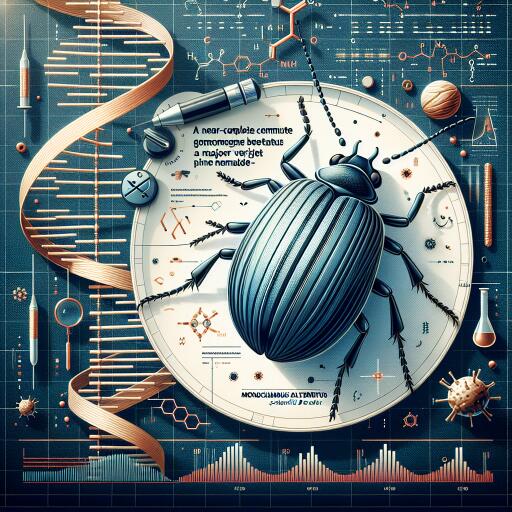A Breakthrough in Understanding the Mechanism of Pine Wilt Disease: The Near-Complete Genome Assembly of Monochamus Alternatus
The Japanese sawyer beetle, Monochamus alternatus, has long been recognized not only as a significant pest affecting forests but also as the primary vector of the pine wood nematode (PWN), which causes the devastating pine wilt disease (PWD). This disease presents a major threat to global pine forests, affecting ecological balances and economic values alike. In a groundbreaking study, scientists have achieved a near-complete genome assembly of M. alternatus at the chromosome level, marking a milestone in our understanding of the intricate relationship between the beetle, the nematode, and the pine wilt disease they spread.
The assembled genome size stands at 792.05 Megabases (Mb) with a contig N50 length of 55.99 Mb, showcasing the largest N50 size among sequenced Coleoptera insects to date. Astonishingly, 99.57% of this sequence has been mapped onto ten pseudochromosomes, comprising one X-chromosome and nine autosomes. This high level of contiguity and completeness is evident with only 13 gaps remaining and a BUSCO evaluation revealing the presence of 99.0% of complete core genes. This genome assembly of M. alternatus not only provides indispensable insights into the pest’s biology but also paves the way for novel control strategies to combat the spread of PWN.
PWD, caused by the plant parasitic nematode Bursaphelenchus xylophilus, relies solely on vector beetles for its transmission, making the understanding of these vectors crucial in developing effective management strategies. The study reveals how M. alternatus plays a pivotal role in the lifecycle synchronization with PWN, highlighting the specific chemical signals that facilitate this intimate relationship. This symbiosis allows the transmission of nematodes from infected to healthy pine trees, consequently causing PWD.
The use of cutting-edge sequencing technologies, including Pacific Biosciences (PacBio) high-fidelity (HiFi), high-throughput chromosome conformation capture (Hi-C), and Illumina short-read sequencing data have culminated in the construction of a high-quality, chromosome-scale genome. This comprehensive genomic resource represents a significant advancement in our capability to explore the evolution of coleopteran insects and the intricate interactions between PWN and its vector insects.
The analysis not only annotated 20,471 protein-coding genes with a high degree of functional annotation but also provided critical insights into the repeat sequences making up 58.23% of the M. alternatus genome. These findings are crucial for understanding the genetic architecture and potential vulnerabilities of this pest species. Furthermore, the assembled genome facilitates comparisons with other coleopteran insects, showing a remarkable quality evident in its contig N50 size and the successful anchoring of the genome sequence onto pseudochromosomes.
Phylogenomic analysis, comparing M. alternatus with thirteen other coleopteran insect species, reveals that it is most closely related to the Asian longhorned beetle, Anoplophora glabripennis. This relationship and the significant expansions in gene families associated with physiological processes provide valuable insights into the evolutionary ecology of M. alternatus and its role as a vector of PWD.
The unveiling of the near-complete genome of M. alternatus represents a critical step forward in our battle against pine wilt disease. It opens new avenues for research into the underlying mechanisms of symbiosis and disease transmission, offering a beacon of hope for developing effective strategies to mitigate the impact of this global forestry challenge.










